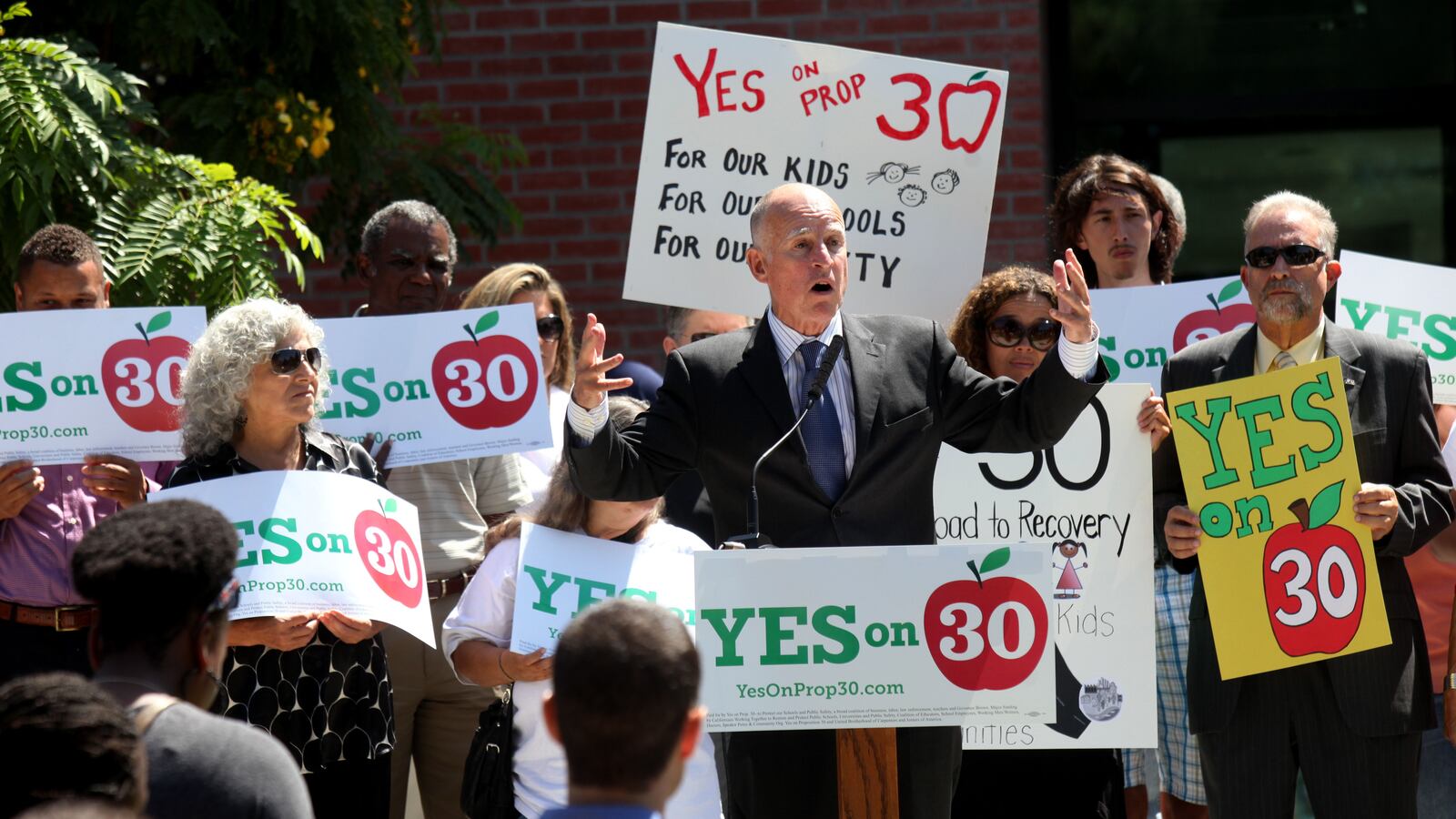In recent years, California has gone its own way on education policy.
In 2013, the governor temporarily suspended its standardized tests, a move then-Education Secretary Arne Duncan called illegal. Low-performing schools faced few, if any, consequences for several years as the state paused its accountability system. And the state is now sparring with the federal government again about how to identify struggling schools under ESSA.
Sacramento or Washington, D.C. shouldn’t dispatch “little busy bodies to run down the halls and chide the teachers,” Democratic Governor Jerry Brown, who spearheaded this philosophy, has said.
It’s amounted to a decade-long rebuke of the federal government — and drawn sharp criticism from civil rights groups, who worry that the state hasn’t done enough to track whether money meant for disadvantaged students actually reaches them, among other issues.
But some recent evidence gives a boost to what supporters call the “California way.”
A key worry of the civil rights groups has been that the state’s funding system, enacted under Brown in 2013 and which has given more districts more to spend and allowed them to decide how to use it, hasn’t benefited California’s most disadvantaged students.
One study — released last week through the Learning Policy Institute, a left-leaning education think tank — found otherwise. The additional money led to notable gains in high school test scores, and students whose schools got an extra $1,000 per pupil each year in grades 10 through 12 were 5 percentage points more likely to graduate. Those gains were just as large, or larger, among poor students and students of color.
Another study, released by University of California, Berkeley researchers last summer, tells a similarly positive story. It found that elementary and middle schools in California districts that received extra funding scored higher than similar schools in districts that just missed out on additional dollars. In this case, Latino students saw the biggest gains.
The studies are consistent with a larger body of research showing that students benefit when schools have more money to spend. But it’s notable here that vulnerable students are still benefiting from these policies without much state oversight.
Meanwhile, a survey released last week by the University of Southern California showed strong support among parents for California’s colorful approach to displaying school performance. California uses a dashboard that includes a school’s ratings on a number of metrics, and doesn’t sum them up with a single score or letter grade.
This display has drawn criticism from advocacy groups and newspaper editorial boards as confusing. But when shown a sample dashboard, about three in four parents surveyed said it was easy to understand and seemed like an effective way to communicate a school’s performance.
The three reports are hardly the final word on these issues. The same poll that showed support for the school dashboards also found that parents who thought schools had gotten worse in the past few years outnumbered parents who said they’d gotten better. Other research has shown that tough accountability rules can boost test scores, particularly in math, and have long-run benefits for students. It’s also possible California’s funding boost would have been even more successful with stronger accountability rules.
Districts may soon have to tell the state more about how they’re spending money, as concerns about transparency have prompted Brown to recently propose new reporting requirements.
Ryan Smith, the executive director of Education Trust – West, a civil rights and education group, is still not sanguine about the state’s policies.
“Moving the ball down the field five yards is not the equivalent of winning the Super Bowl,” said Smith. He pointed to a report from his group that applauded the increase in spending in high-poverty districts but found disparities in students’ access to counselors, librarians, and advanced courses.
“When we ask the state what are the supports that you’ll be providing to low performing schools, they continue to kick that can down the road,” Smith said. “We still have an accountability system that’s removing safeguards for black, brown, and poor children.”
Scott Roark, a spokesperson for the California Department of Education, said the state is implementing a tiered support system for struggling districts that ranges from providing workshops and classroom coaches for teachers to “more intensive interventions.”
“California has moved away from a ‘sanction and punish’ approach to accountability that was implemented under the No Child Left Behind Act,” he said.


